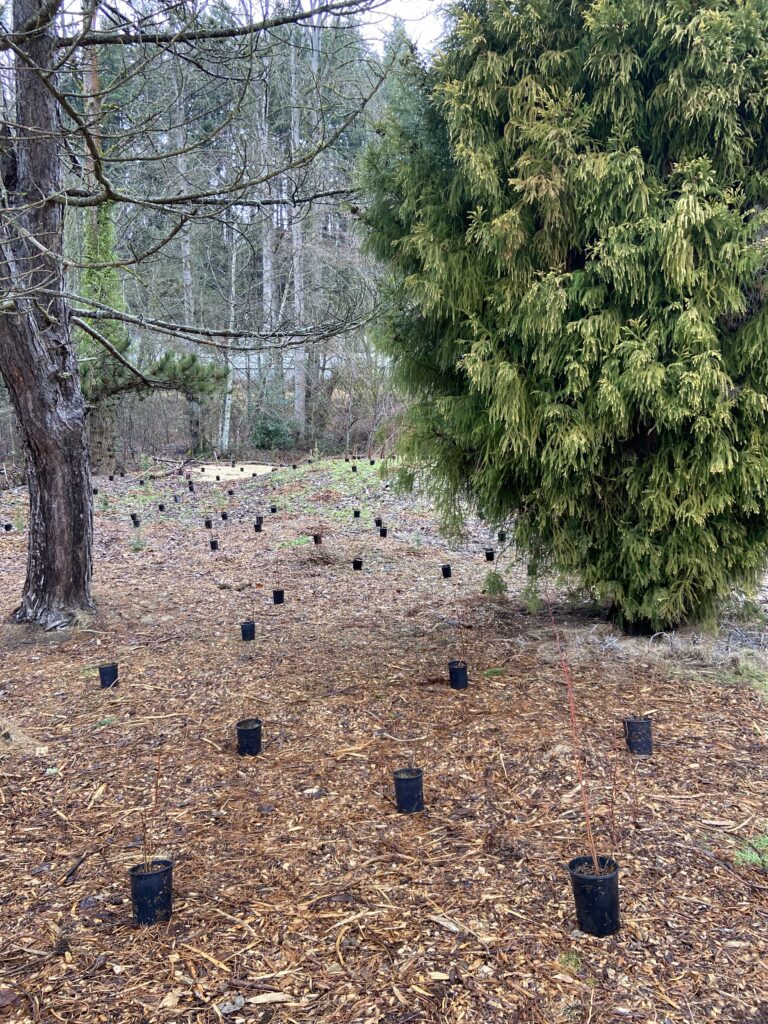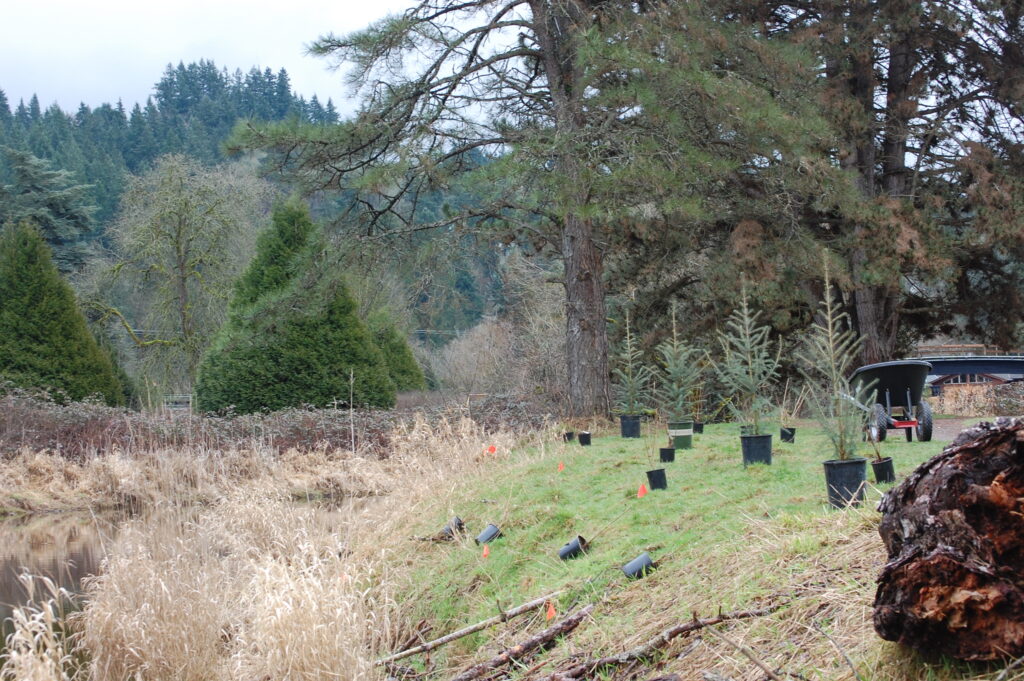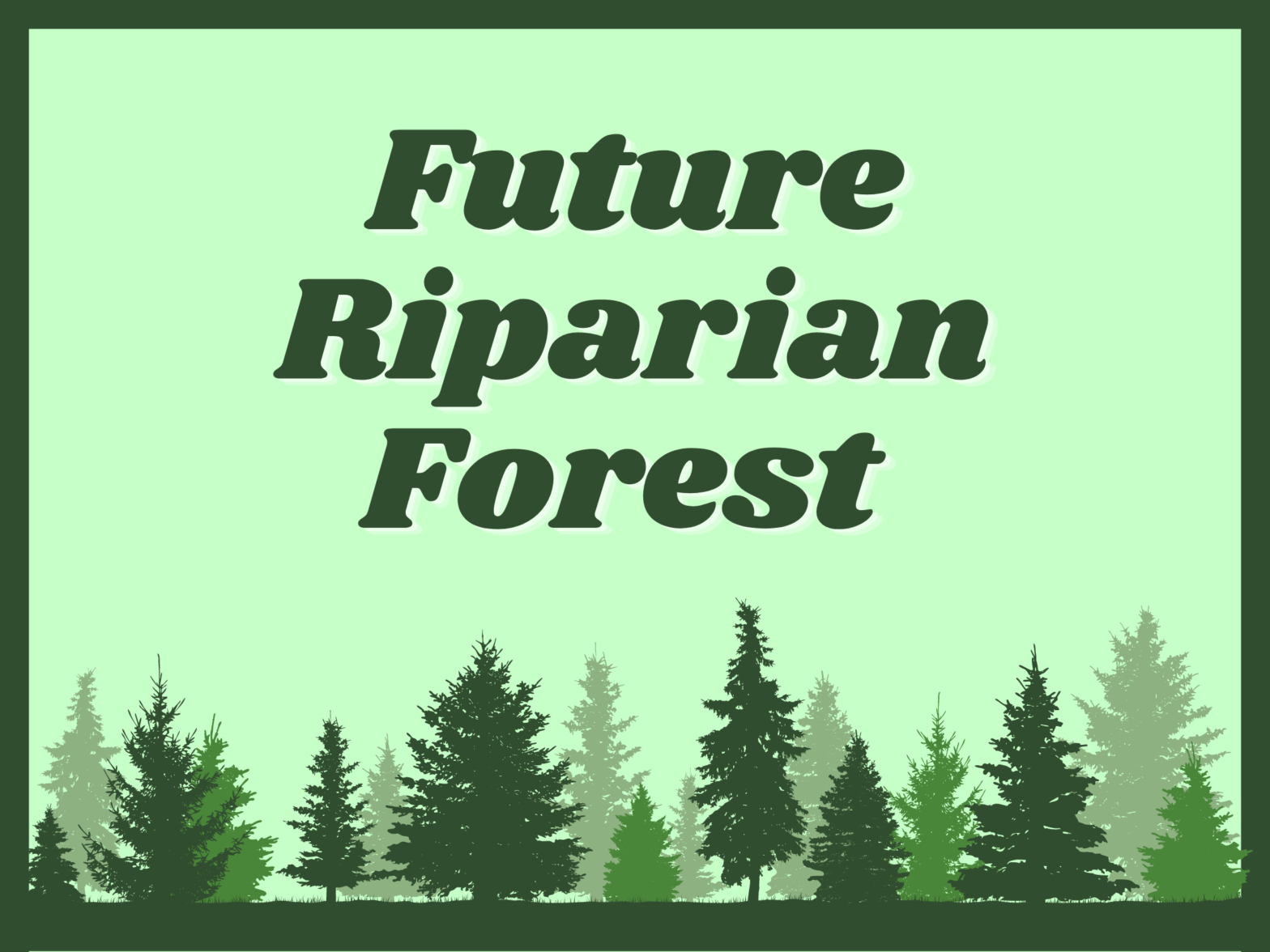March 2024
Starting in Winter of 2023, four UW Bothell seniors joined us to complete their capstone projects focused on riparian zone restoration. These students focused on riparian restoration projects such as water quality monitoring, GIS vegetation monitoring, soil analysis, and the use of wildflowers in newly planted sites. Please visit the website they created which includes all their work and results. All of their work will be used for future planting sites and to better protect riparian zones and salmon spawning sites.
Now that spring is upon us, that means that planting season has ended. Planting season went from October of 2023 and came to an end in March 2024 with a final plant count of 275 trees and 1,472 shrubs! During our planting season we got to work with 712 volunteers (2,000 volunteer hours total) that came out to plant with us, we couldn’t have done it without them! We look forward to prepping new planting sites for the future, now along the Sammamish River!

February 2024

As 2024 rolled around, we continued our goal of planting as many shrubs and trees as possible before the end of the season! We continue towards this goal with already having planted over 1,000 plants thanks to the help of hundreds of volunteers and staff! Additionally, we have the help from four UW Bothell students who are working to complete their senior capstone projects through field research. Their work has provided us with knowledge about the parks soil composition, better planting practices, GIS mapping, and how native wildflowers can contribute to biodiversity.

Even more exciting news, we started planting on the riverbank! The goal of finally planting on the banks of the river has been a long-awaited dream and now we starting to see it unfold. Trees such as Sitka Spruce have now been planted along the bank along with Elderberry and Black Twinberry.

What are these?
You might have noticed a bunch of weird sticks that have been placed in the ground along the bank of the river. These are willow stakes! Willow stakes are simply branches of a willow tree that have been cultivated, propagated in water and can be used to plant. Placing them along the river help to deter beavers from taking our precious, newly planted coniferous trees. As time goes on these willow stakes will root and start to grow into individual willow trees (if the beavers don’t get to them first).
October 2023
Current Planting Area!
Begings of 2023 was the start of our new future riparian forest. Unlike the first location, this one was covered in nearly 10 foot tall Himalayan Blackberry bushes. Thanks to hundreds of volunteers and a wonderful group of spring/summer interns they were cleared. In the course of one year, we had 825 volunteers with a total of over 3,000 hours!
The prevent the blackberries from returning, we covered the ground with cardboard and placed inches of mulch. We also discovered a small stream of water which appears to be leading to the Sammamish River. Work is currently being done to test and measure the streams water quality.
Now that most of this patch of land is cleared of blackberry bushes it is time to plant! Starting in the fall of 2023, we have made progress planting this area and continuously removing invasive weeds upwards the Burke-Gilman trail. We look forward to getting the remaining sections planted so they are established by the spring of next year!
Would you like to help us achieve our goal?
The VOLUNTEER webpage details the roles, programs and benefits of volunteering with whale scout. For groups of five or more please email Whitney directly at Director@whalescout.org.
Community events will be announced on the Whale scout main page.
The Bothell volunteer webpage illuminates other volunteer opportunities and information. You can also contribute by Donating.
Why Riparian Restoration?
The goal of this project is to mimic the historic riparian forest buffer that was once growing along the Sammamish River of the past.
Native trees and shrubs protect areas along the riverbanks by reducing erosion while improving soil structure with their root systems. They also help water quality by infiltrating the soil and replenishing groundwater sources. These sources cool the river in the summer to the benefit of salmon and all the rivers’ inhabitants.
Trees and shrubs also create shade and thus reduce the temperature of the river. Salmon are very sensitive to temperature spikes and need cool water to stay healthy while moving upstream. Salmon also need our rivers and streams for spawning and rearing, as they eventually make their way into the Puget Sound.
Our Southern Resident orcas are endangered, and their main food source is Chinook salmon. 80% of their diet is Chinook salmon. Yet even salmon populations are diminishing. Populations have decreased tremendously starting back in the 1800s due to logging, farming, dams etc. Salmon numbers aren’t the only things that have decreased; they can grow up to 130lbs, they now average about 30lbs. To help their orca populations, increasing their access to food is essential. The whales and salmon need our help to reduce the impacts of human development that are endangering them.
Planting area:
This first restoration site was planted in the fall of 2022 and winter of 2023 with the funding contributions from the Trammell Crow Company and support from Bothell Parks and Recreation.
Several groups including students from the Sky Valley Education Center, Heartwood Nature Programs, and Pack 594 assisted with restoring the site. Public volunteers helped at the site for Arbor Day, Orca Recovery Day, and MLK day. Fencing around conifers is utilized to protect the trees from our wonderfully persistent beaver and deer populations.
Ongoing research projects by undergraduate research students from the University of Washington Bothell are also featured at the site.
Approximately 800 plants will be installed in the 14,500 square foot area. Future plantings are slated for other areas throughout the park.
Current Research:
During the summer months, measurements were being done one the trees and shrubs in the planted area to capture how well they are doing and how well they are growing. Measurements include the height and width of the plants to establish tree canopy along with their estimated health. Data is collected throughout the months and once collected they are processed through data analysis. This data will help us understand why these plants are doing well and inform us what plants to plant in future locations.
